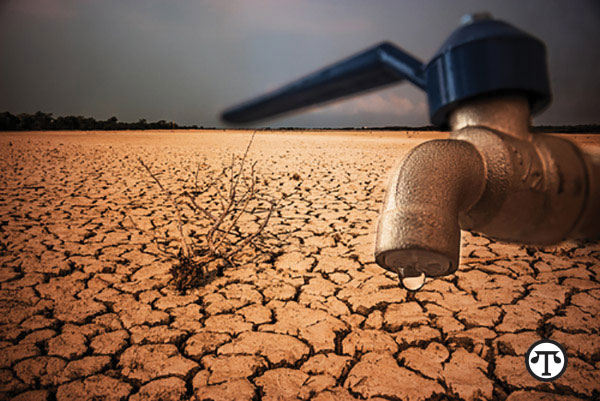
(NAPSI)—In any given year, parts of the United States experience conditions ranging from abnormally dry to severe drought, and for private water well owners there are steps that can help them weather a dry spell, according to the National Ground Water Association (NGWA).
Drought Effects On Wells
When a well goes “dry” due to drought, it often means the water table drops below the level of the pump. It is like putting a straw into the top of a full glass of water. If a person drinks the water and does not lower the straw as the water level drops, that person will end up sucking air. There is still water in the glass, but the straw is above it.
If drought is severe enough or the well shallow enough, the water level can drop below the level of the well entirely.
Wells typically do not go dry at once. Rather, the water table drops gradually due to a lack of replenishment from rain. Often, older wells drilled only into the top of an aquifer are most likely to fail first. Depending on the severity of drought, it can take multiple soaking rains over time for an aquifer to be replenished.
Some aquifers are sealed off from surface water replenishment due to an impermeable layer of rock. A well drilled into such an aquifer is drawing from a limited source of water, which, when depleted, could take hundreds or even thousands of years to replenish.
Diagnosing Loss In Well Productivity
Even in an area of water scarcity, a well’s loss of productivity could be due to reasons other than a lowering of the water table. A qualified water well system contractor can determine the cause.
When the problem is not a lowered water table, a well sometimes can be rehabilitated to yield substantially more water. Often, various techniques can be applied to the well screen or surrounding geology to enable water to flow more freely into the well.
When the problem is a lowered water table, it may be possible to drill the well deeper to extend its depth back below the water table. The size and condition of the well casing will dictate if a well can be drilled deeper.
Deepening a well, however, does not guarantee that it will produce more water. In some cases, a new well drilled in a different location may be necessary to provide a more reliable water supply. A reputable water well system professional can inspect a well and recommend options.
Using Water Wisely
One aspect of using water wisely is not wasting it. Installing a water meter can provide valuable information on how much water is being used and the effectiveness of various conservation efforts.
Another aspect of using water wisely is managing its use; for instance, scheduling water-intensive activities such as clothes washing, dishwashing and showers across the day so they are not occurring simultaneously. This allows the well and any storage tanks to refill to meet the next need.
Yet another water management tool involves installing transducers in the well. These monitor water levels and signal the pump to activate when adequate water is available.
Learn more about water well ownership and find well owner lessons, webinars, an app, and information on well construction, maintenance, water testing, water treatment, and groundwater protection at www.wellowner.org.
